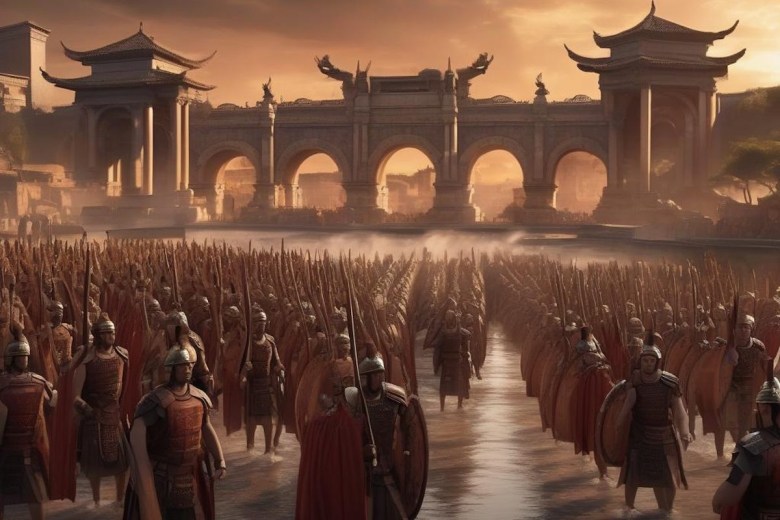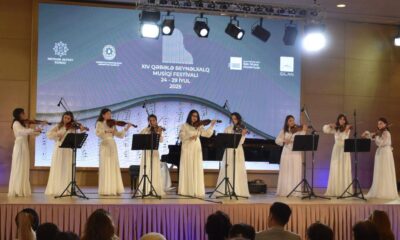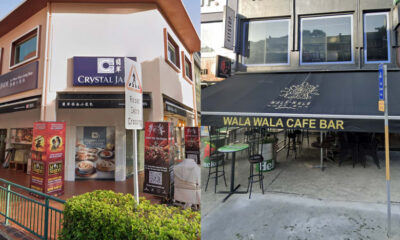Science
Examining the Divergent Histories of Ancient Rome and China

A recent speech delivered by Feng Youlan at the First World History Frontiers Forum in Beijing highlighted the contrasting historical trajectories of ancient Rome and China. Organized by the Chinese Academy of Social Sciences on September 12, 2025, and published by the Appia Institute, the speech outlines how geographic environments shaped the political and social structures of these two ancient civilizations.
The ancient Roman Empire, established around the Mediterranean, was built upon earlier civilizations like the Greeks and Phoenicians. These cultures were adept navigators, and Rome first had to conquer the Italian peninsula to gain control over the Mediterranean. The Roman navy featured ships manned by rowers who operated as equals, illustrating a core value of cohesion. The phalanx, a significant military formation, also emphasized equality and collective effort, where mistakes could lead to catastrophic failure. The unpredictable nature of the Mediterranean’s winds and currents necessitated adaptability, making it essential for leaders to correct errors swiftly.
In contrast, the Chinese civilization developed in a geographically enclosed environment, surrounded by steppes, deserts, and mountains, with the eastern boundary marked by an ocean. This isolation presented unique challenges that required a long-term, organized approach to land management and resource cultivation. The dense jungles and formidable rivers of ancient China necessitated a highly structured hierarchy, where authority played a crucial role in expanding agricultural output and building military strength. Over time, this led to a centralized political structure that differed significantly from Rome’s emphasis on a collective military ethos.
The Roman political system featured a dual leadership structure, with two consuls ruling in succession, similar to the dual kings of Sparta. This arrangement aimed to mitigate errors from previous leaders and proved effective in military campaigns, such as those against the Persian Empire. The Roman legion operated much like a private equity firm, where rewards were distributed based on rank and performance, driving cohesion and efficiency.
The political landscape of ancient China stood in stark contrast. The emperor acted as a semi-religious figure, ensuring social order rather than participating directly in warfare. The bureaucratic hierarchy created a social distance between the sovereign and the soldier, where loyalty to the ruler was paramount. The effectiveness of governance relied heavily on the ruler’s judgment, underscoring the importance of strong leadership in maintaining stability.
The Philosophical Divide
During the fourth and fifth centuries BCE, philosophical debates in China reflected the distinct social and political organization of the time. Mozi emerged as a significant figure, presenting arguments against competing schools of thought. His texts, notably “Fei Ru” (Against the Confucians) and “Fei Gong” (Against Offensive Warfare), highlighted his opposition to aggressive military expansion, advocating instead for a balance of power among states.
Mozi’s proposals emphasized efficient organization but did not advocate for an army of equals akin to the Greek phalanx or Roman legion. This philosophical stance indicates a divergence in military organization, where Chinese armies were typically composed of nobles and farmer-soldiers rather than a unified force of equals. This lack of camaraderie among soldiers limited the potential for a cohesive military culture similar to that of Greece and Rome.
In Greece and Rome, the concept of heroic sacrifice was celebrated, epitomized by figures like Achilles in the Iliad, who chose a short life for eternal glory. Conversely, Chinese philosophy emphasized the concept of yang sheng (nourishing life), which prioritized personal survival over collective sacrifice. This fundamental difference in values further illustrates the contrasting worldviews of these ancient civilizations.
The Mediterranean’s political unity achieved by Rome was unique and has not been replicated since. In contrast, the unity of the Central Chinese plain became a recurring theme in Chinese history, particularly during the Sui and Tang dynasties. While Rome admired the achievements of earlier civilizations like Egypt, it did not seek to claim a historical continuity with them, marking another divergence in historical narratives.
Ultimately, the examination of ancient Rome and China reveals two distinct paths shaped by their geographical and historical contexts. Each civilization developed its unique strengths and weaknesses, influencing their trajectories over centuries. The challenge of reconciling these histories remains significant, as contemporary society seeks to understand the implications of these ancient legacies.
The insights gained from this discourse underscore the importance of geography and historical context in shaping philosophical and political thought. As Feng Youlan emphasizes, philosophy serves as a vital tool for addressing historical issues, fostering a deeper understanding of the world today.
-

 Lifestyle3 months ago
Lifestyle3 months agoHumanism Camp Engages 250 Youths in Summer Fest 2025
-

 Sports3 months ago
Sports3 months agoDe Minaur Triumphs at Washington Open After Thrilling Comeback
-

 Business4 months ago
Business4 months agoKenvue Dismisses CEO Thibaut Mongon as Strategic Review Advances
-

 Sports4 months ago
Sports4 months agoTupou and Daugunu Join First Nations Squad for Lions Clash
-

 Top Stories4 months ago
Top Stories4 months agoColombian Senator Miguel Uribe Shows Signs of Recovery After Attack
-

 World4 months ago
World4 months agoASEAN Gears Up for Historic Joint Meeting of Foreign and Economic Ministers
-

 Business4 months ago
Business4 months agoOil Prices Surge Following New EU Sanctions on Russia
-

 Entertainment3 months ago
Entertainment3 months agoDetaşe-Sabah Violin Ensemble Captivates at Gabala Music Festival
-

 Health3 months ago
Health3 months agoNew Study Challenges Assumptions About Aging and Inflammation
-

 Entertainment3 months ago
Entertainment3 months agoBaku Metro Extends Hours for Justin Timberlake Concert
-

 Business4 months ago
Business4 months agoU.S. House Approves Stablecoin Bill, Sends to Trump for Signature
-

 Top Stories4 months ago
Top Stories4 months agoRethinking Singapore’s F&B Regulations Amid Business Closures









